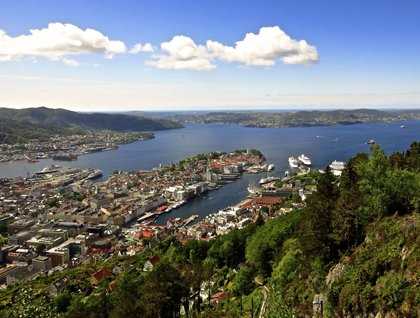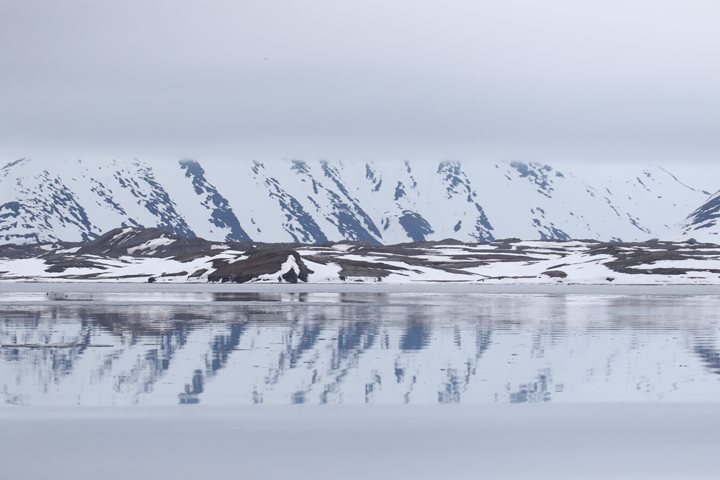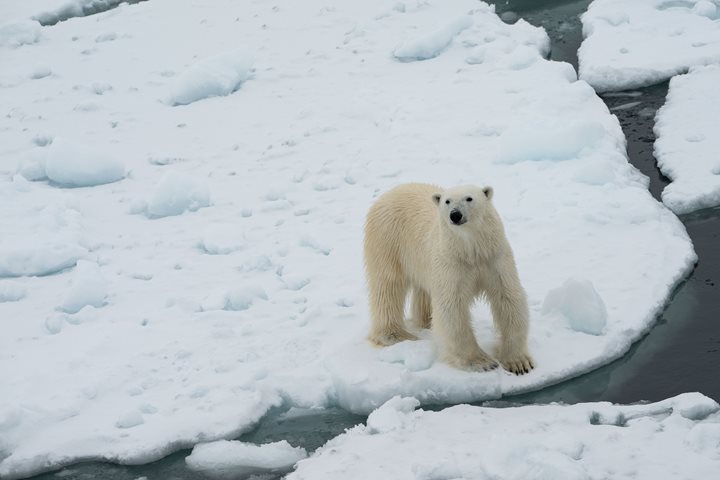Early this morning, National Geographic Explorer slowly sailed into the major port of Bergen, Norway. This is the second largest city in Norway, and has, since medieval times, been competing with Christiania (nowadays Oslo, the current capital) to be the main center for trade, maritime activities and culture in Norway. In Bergen they also speak Norwegian with their strong western dialect, very different from Oslo.
In 1909 the railroad between Bergen and Oslo was inaugurated, but with the high mountains separating Bergen from the rest of Norway, even today it really lives its own life. Bergen is also climate-wise very different from most of inland Norway, with a Gulf Stream sweeping just outside, which gives very mild winters but also cool summers. Significant for the Bergen area in early June are the rhododendrons, now in full bloom. Nowhere else in Scandinavia are they found as high, lush and rich as in Bergen.
During medieval times Bergen was already established as an important trade center by the Hanseatic League, with its base at Lübeck; they were trading dried cod from from northern Norway though Bergen and throughout southern Europe and beyond. The rich fishing grounds for cod north of Bergen, especially at Lofoten, and the possibility to dry this fish, made it into a major commodity for trade with the Catholic world further south in Europe. Many days to fast but the head of the church, the Pope, realized people needed food every day, and decided dry fish was to be regarded as “cold meat” and was free to consume during fasting days. The market was endless down south and the fishing grounds, in the north, were extremely rich. The export of dry fish still continues to this day.
Bergen, with its sheltered harbor between the seven mountains, was an ideal spot to become a trade center for the Hanseatic traders. In the afternoon some of us were able to walk through the oldest parts of Bergen, the Hanseatic city, to enjoy this UNESCO cultural heritage site with its old wooden buildings.
Those in search of nature went up to the mountain with the funicular railway to first overview the city with its protected harbor before heading off on a nature walk. Some of us then walked back down to the city along winding paths, enjoying the wild flowers and birds along the way. The bird song was delightful and the early summer flowers were in their prime on this warm, sunny summer afternoon.
Others enjoyed a stroll in town to visit the busy fish market. The harbor was also busy with boats and ships of all shapes and sizes, ranging from huge passage ships, supply ships for the most important industry in Norway, oil and gas, and small ferries and pleasure craft. In front of us was a nice old sailing ship and behind, a new type of supply vessel equipped with a very strange bow, called Ulstein X-Bow, used in the oil and gas industry. Walking along the waterfront for sure gives a maritime flavor that many former major shipping ports have lost today.
In the morning we all did a tour around Bergen, including the central parts of the city and a visit out to Trollhaugen (the home of Edward Grieg, the famous Norwegian composer). We were also able to visit a very interesting stavkirke (church). In Norway, as early Christianity arrived around 1000 AC, wooden churches were built all over the area.
All our local guides were keen to explain the local details of Bergen, and the important people with strong connections to the city, but they failed to mention the people who probably affect our lives the most today. We now all rely on good weather forecasts; much of the science of meteorology was developed more than 100 years ago, The Bergen School of Meteorology, established by Vilhelm Bjerkness (1862-1951) and later his son Jacob Bjerknes (1897-1975) made the base for understanding how weather systems develop. Bergen, with its constantly changing weather patterns, was ideal for studying how weather fronts sweeping in from the North Atlantic or cold polar fronts met warmer air over the continent. Or in a more scientific way, ”the dynamics of the polar front integrated with the cyclone model, and provided the mechanism for north-south heat transport in the atmosphere.” Jacob later emigrated to the U.S. and finally ended up in California and was part of the team to establish the UCLA Department for Meteorology.
At 6:00 p.m. our local Norwegian pilots, who will takeus out through the fjords as far as Tromsø, arrived and we left our docking site beside the old fortress, Bergen Hus, with its famous watchtower, Rozenkrantz, to sail for the midnight sun. Time to explore the fjords of Norway and head NORTH!
Photos by Sisse Brimberg & Cotton Coulson and CT Ticknor.







